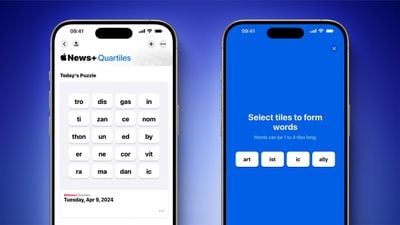Interested in building your very own AI assistant complete with voice and personality using a combination of Node.js, OpenAI Whisper and ChatGPT, ElevenLabs and LangChain? This guide offers more insight into how you can get started and features a video by Developers Digest that shows you how to combine the different technologies to create a speaking AI assistant in just nine minutes using Node.js as the primary platform.
In essence, Node.js enables JavaScript to be used for server-side scripting, unifying the programming language for both client and server, and making it easier for developers to build full-stack applications. Node.js is a runtime environment that allows you to execute JavaScript code on the server side. Unlike client-side JavaScript that runs in the browser, Node.js is built to run on various platforms like Windows, macOS, and Linux, and is commonly used for building back-end services or APIs.
Node.js is built on Google’s V8 JavaScript engine and uses an event-driven, non-blocking I/O model, making it efficient for scalable applications. It has a rich ecosystem of libraries and frameworks available through its package manager, npm (Node Package Manager), which can be used to extend its functionality.
Building a personal AI assistant using Node.js
With the right tools and a little bit of coding knowledge, you can create an assistant that can listen to your commands, understand them, and respond in a natural, human-like voice. This article will guide you through the process of setting up a voice assistant using OpenAI API, ElevenLabs, and Node.js.
ElevenLabs is a voice AI company that creates realistic, versatile, and contextually-aware AI audio. They provide the ability to generate speech in hundreds of new and existing voices in over 20 languages. OpenAI, on the other hand, is an artificial intelligence research lab that provides powerful APIs for various AI tasks, including natural language processing and understanding.
Other articles we have written that you may find of interest on the subject of AI assistants
Why build your very own AI assistant?
- Unified Tech Stack: Node.js allows you to write server-side code in JavaScript, potentially unifying your tech stack if you’re also using JavaScript on the client side. This makes development more streamlined.
- Cutting-Edge Technology: ChatGPT is based on one of the most advanced language models available, offering high-quality conversational capabilities. Integrating it with your assistant can provide a robust natural language interface.
- Customization: Using ElevenLabs and LangChain, you can customize the AI’s behavior, user experience, and even the data sources it can interact with, making your personal assistant highly tailored to your needs.
- Scalability: Node.js is known for its scalable architecture, allowing you to easily expand your assistant’s capabilities or user base without a complete overhaul.
- Learning Opportunity: The project could serve as an excellent learning experience in fields like NLP, AI, server-side development, and UI/UX design.
- Open Source and Community: Both Node.js and some elements of the GPT ecosystem have strong community support. You can leverage this for troubleshooting, updates, or even contributions to your project.
- Interdisciplinary Skills: Working on such a project would require a mix of skills – from front-end and back-end development to machine learning and user experience design, offering a well-rounded experience.
- Innovation: Given that personal AI assistants are a growing field but still relatively new, your project could contribute new ideas or approaches that haven’t been explored before.
- Practical Utility: Finally, building your own personal assistant means you can design it to cater to your specific needs, solving problems or automating tasks in your daily life.
To create your very own speaking AI assistant, you’ll need to acquire API keys from both ElevenLabs and OpenAI. These keys can be obtained by creating accounts on both platforms and viewing the API keys in the account settings. Once you have these keys, you can start setting up your voice assistant.
Creating a personal AI assistant capable of speech
The first step in creating your very own speaking AI assistant is to establish a new project directory. This directory will contain all the files and code necessary for your assistant. Within this directory, you’ll need to create an environment file (EnV) for your API keys. This file will store your keys securely and make them accessible to your code. Next, you’ll need to create an index file and an ‘audio’ directory. The index file will contain the main code for your assistant, while the ‘audio’ directory will store the audio files generated by your assistant.
Node.js
Once your directory structure is set up, you’ll need to install the necessary packages. These packages will provide the functionality needed for your assistant to listen for commands, understand them, and generate responses. You can install these packages using Node.js, a popular server-side scripting language that allows JavaScript to be used for server-side scripting. After installing the necessary packages, you’ll need to import them into your index file. This will make the functionality provided by these packages available to your code.
ChatGPT
With your packages imported, you can start setting up the OpenAI ChatGPT instance and keyword detection. The ChatGPT instance will handle the natural language processing and understanding, while the keyword detection will allow your assistant to listen for specific commands. Next, you’ll need to initiate and manage the recording process. This process will capture the audio commands given to your assistant and save them as audio files in your ‘audio’ directory.
OpenAI Whisper
Once your audio commands are saved, they can be transcribed using the whisper transcription from OpenAI. This transcription will convert the audio commands into text, which can then be understood by your assistant. With your commands transcribed, your assistant can check for keywords and wait for a response from the OpenAI Language Model (LLM). The LLM will analyze the commands and generate a text response. This text response can then be converted to audio using ElevenLabs’ AI audio generation capabilities. The audio response will be saved in your ‘audio’ directory and can be played out to the user.
Finally, you can customize your assistant to perform certain actions or connect to the internet for further functionality. Creating your very own speaking AI assistant is a fascinating project that can be accomplished with a few tools and some coding knowledge. With ElevenLabs and OpenAI, you can create an assistant that can listen, understand, and respond in a natural, human-like voice.
Filed Under: Guides, Top News
Latest togetherbe Deals
Disclosure: Some of our articles include affiliate links. If you buy something through one of these links, togetherbe may earn an affiliate commission. Learn about our Disclosure Policy.






